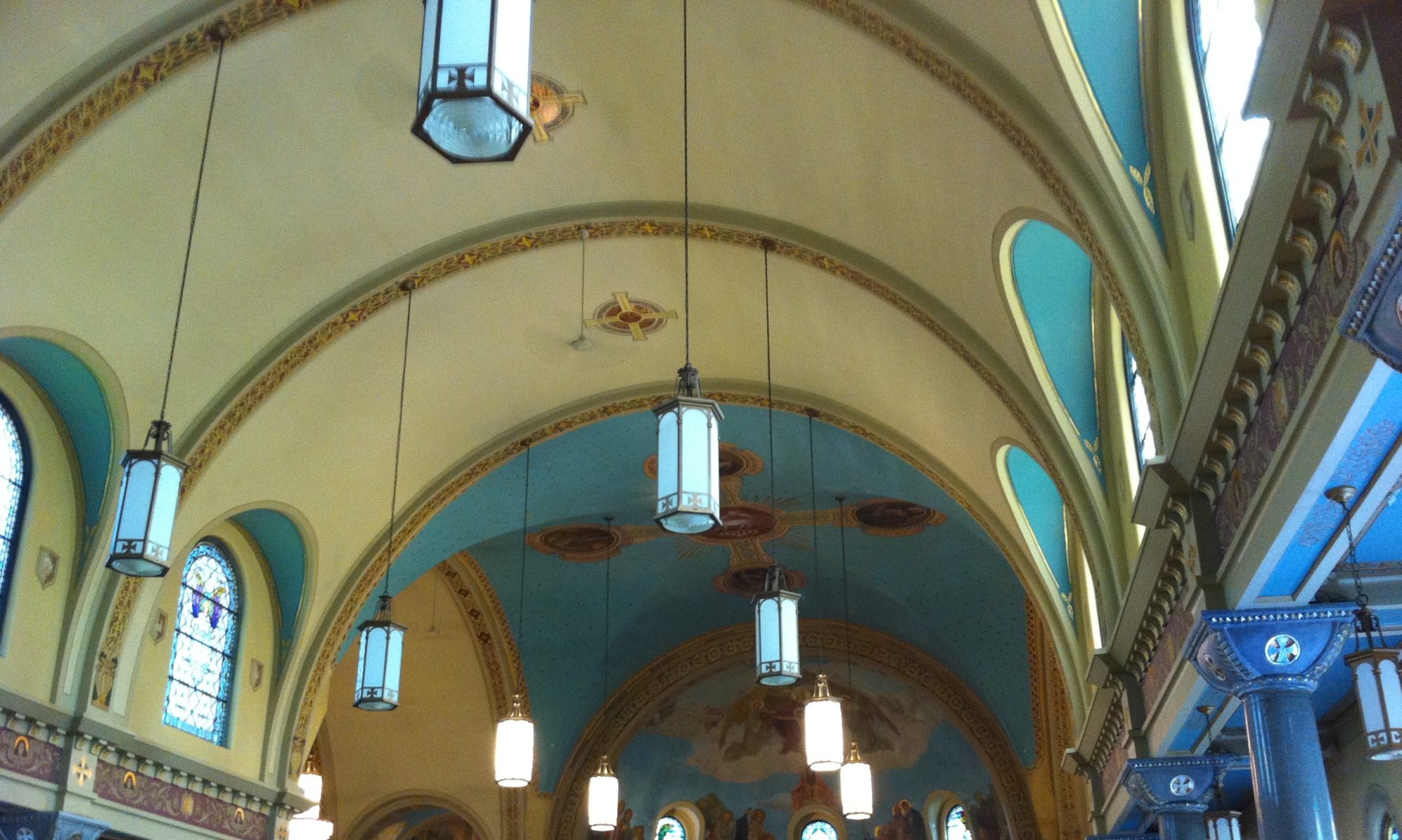Date: 3/11/12
Church: St Stephen’s Episcopal Church
Pastor: Father Adam Egan
Time Spent: 9:30-10:30 lecture prior to service, 10:30-12noon service
Overall Impression: Seems nice
Type: Episcopal, member of the Anglican Communion (it means they are linked to the Anglican church in England from which the Episcopal Church split off in the early days of the US)
Format: The service is very formalized and structured, similar to what you would find in a Roman Catholic Church. In fact, much of it is word for word what is used in the Catholic church. Every part of service has certain words which are used and well known by the congregation. It is very formulaic. If I don’t miss my guess, most Episcopal churches are going to be the same. Rough format is: silent confession of sins, readings from the old and new testament, sermon, statement of belief, prayer intentions, communion, prayer- all interspersed with songs from hymn books.
Thoughts: A bit of an unusual Sunday to the project, I started out by attending a talk at the church about the 39 articles of religion. This turned out to be (awesomely) something of a history and church doctrine lesson. There will be continuation of it for several more Sundays and I’m strongly tempted to put the project on hold and attend all of them. Putting that aside for a moment, I will talk about the service itself.
Inside the church was bright, clean, and adequately warm. I was greeted by several attendees of the 9:30 talk who made chit-chat with me. At the church service itself I was given a cursory greeting by a bunch of different members, especially during the “passing of the peace”. It serves as kind of a hello time for all the members and falls a little outside the formality. This church did a moderately subdued musical chairs style passing of the peace, with some people leaving their seats. The rest of the service was expectedly very formal. The good thing about this church was that the entire formula we were expected to follow was printed in the bulletin. The only difficulty I had was in switching from holding the bulletin to holding the hymn book, to holding the page of the bible readings, which happened several times back and forth.
The sermon was more on the topic of the history of the Anglican church. Here is what I learned:
Much of the format and prayers used in services comes from a book called The Common Book of Prayer. The original version of the book was compiled in 1549, from existing sources mostly, by a dude named Thomas Crammer. He was an advisor to King Henry VIII. After King H died and his son took over, Crammer instituted some minor/huge changes, depending on how you look at it. It was a big deal at the time. He removed idols, images, and relics, because they distract from us praying right to God. He instituted weekly communion. At that time the Catholic church only had communion on Easter. He also emphasized the idea of grace and the fact that God loves us. And most cool of all, he had English used in service instead of Latin! The uncool part was when Queen Mary took over and had Crammer burned for refusing to stick to his recantation of the new church.
There were other familiar parts to the service here and there. The communion used wine like a Catholic mass. The congregation sang a slower version of the doxology. Prayer requests were all followed by a response “Lord, have mercy”. Basically this felt like a bridge between all the Catholic and Methodist churches I have attended with any regularity. Very interesting and intriguing.
Overall Feelings: Felt very familiar. Not as energetic as some denominations can be. That can be ok, boisterous worship is not for everyone.
Project Direction: I’ve decided. I am changing a rule. I was so taken by the timing of finding a church that explains it’s own history and doctrine as I happened to show up, that I am going to stay for a few Sundays. It seemed like such a shame to just move on and miss all that info. It is after all, my project, so I’m going to get my fill of Anglicanism before moving on. I can’t wait to see what happens next.
